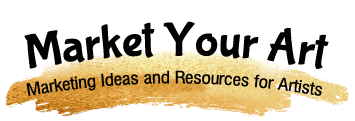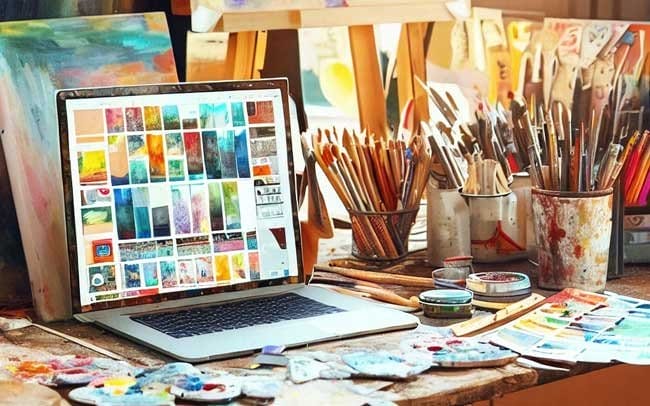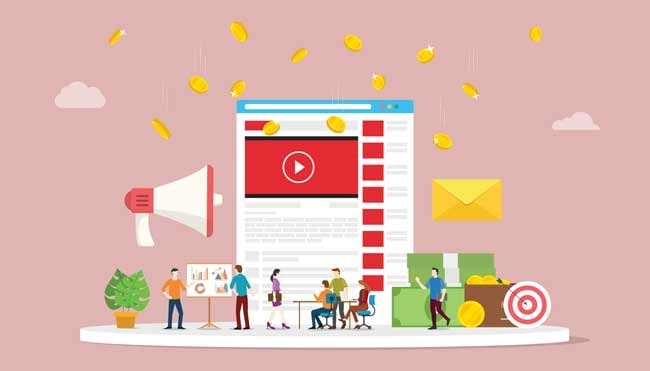You’re an artist, a creator of beauty and emotion. You pour your heart and soul into your work, and it deserves to be seen and appreciated, right? But with so many social media platforms out there, it can feel overwhelming to decide where to focus your energy. Let’s talk about why Pinterest for Artists, a platform you might have overlooked, could be your secret weapon in promoting and selling your art.
First, let’s face it, as an artist, your time is precious. Between creating your masterpieces, sourcing materials, and managing the business side of things, you might feel like you barely have time to breathe, let alone manage multiple social media accounts. So why should you consider adding Pinterest to your social media marketing plate?
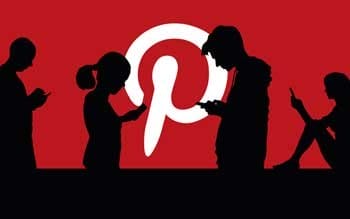
Well, unlike other social platforms, Pinterest is a visual search engine. Think of it like Google, but with pictures. People come to Pinterest specifically to discover and explore new ideas, making it the perfect platform to showcase your art.
While Instagram and Facebook are popular, they’re also saturated with content. It can be tough to stand out in a sea of posts. But on Pinterest, your art can shine. Each pin (the term for a post on Pinterest) has a longer lifespan compared to a post on Instagram or a tweet on Twitter. While a tweet might be forgotten within minutes and an Instagram post lost within hours, a pin can continue to circulate for months, even years, increasing the chances of your art being discovered.
Plus, Pinterest users are action-oriented. They’re not just mindlessly scrolling; they’re actively searching for something specific, like “acrylic landscape painting” or “ceramic sculpture,” making them more likely to engage with your art and potentially make a purchase.
So, are you ready to dive into the world of Pinterest and unlock its potential for your art business? Let’s get started!
What is Pinterest?
Pinterest for Artists offers a world filled with ideas, inspiration, and creativity. Imagine walking into the biggest art gallery in the world, where every piece of art leads you to the artist’s studio with just a click. That’s Pinterest for you!
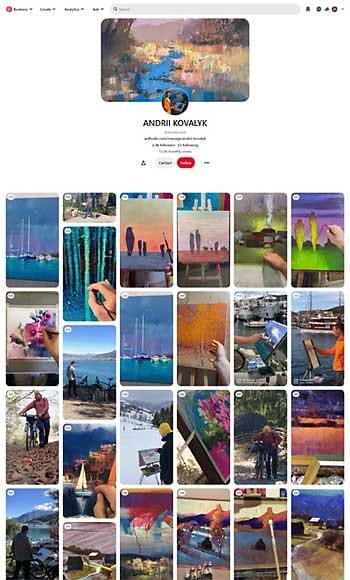
Pinterest is like a giant, interactive mood board. Users “pin” images, videos, and products they like onto “boards” they create. These boards can be about anything – from “Abstract Art Ideas” to “DIY Pottery Techniques”. They’re a way to organize and categorize the things you love.
When you create a pin, you’re adding an image or a video to Pinterest. This pin can be anything—an artwork you’ve created, a product you’re selling, or even a blog post about your latest art exhibition. Each pin allows you to add a description and a website link, turning every pin into a portal to your art. Click on the pin, and the user is transported to the linked web page.
For example, let’s say you’re a watercolor artist. You could create a pin featuring one of your best pieces, add a description like “Watercolor landscape painting inspired by the Grand Canyon” and link it to your online store where that painting is for sale. Now, anyone who comes across your pin can click on it and be taken straight to your store. It’s like having a direct line from your art to potential buyers!
But that’s not all. Pinterest is also a search engine. People come to Pinterest to search for ideas and inspiration. They might type in “watercolor landscape” or “Grand Canyon art,” and if you’ve used those keywords in your pin description, your pin might show up in their search results.
So, Pinterest is not just a social media platform; it’s a showcase for your art, a direct line to your buyers, and a search engine to help new fans discover you. Now, let’s explore how you can make it work for your art.
Why Should You Use Pinterest in Your Marketing Strategy?
As an artist, you might be thinking, “Why should I use Pinterest? I’m already on Instagram, Facebook, and Twitter.” That’s a valid point. You’re busy, and managing another social media account might feel like a lot. But here’s the thing—Pinterest isn’t just another social media platform. It’s a unique tool that fits neatly into your marketing strategy, filling gaps that other platforms can’t.
Think of Pinterest as your virtual art gallery. It’s a place where you can display your work in a visually appealing way. Unlike social media platforms where posts quickly get buried under new content, your Pinterest gallery is evergreen. Your pins stay there, continually attracting new viewers.
Pinterest also acts as a bridge between you and your potential customers. When someone clicks on your pin, they can be taken directly to your website, online store, or wherever you want to lead them. This direct connection is something that’s harder to achieve on other platforms.
But perhaps the real star of the show is Pinterest’s search function. Remember, Pinterest is a search engine, much like Google. People come here to find specific things. If someone is looking for “modern abstract oil paintings,” and you happen to specialize in that, they could stumble upon your work. By using the right keywords in your pin descriptions (more on this later), you can make it easier for your ideal customers to find you.
So, while Instagram might be perfect for sharing behind-the-scenes snapshots of your creative process, and Facebook is great for connecting with a community of art lovers, Pinterest serves a different purpose. It’s where you can showcase your art, attract people actively looking for what you offer, and lead them straight to your shop.
In short, Pinterest is a powerful piece of the puzzle in your art marketing strategy, helping you reach more people, showcase your work effectively, and ultimately, sell more art. Now, let’s get into the nitty-gritty of how to use Pinterest to promote your work.
The DNA of Pinterest – A Pin, a Rich Pin and a Pinterest Board
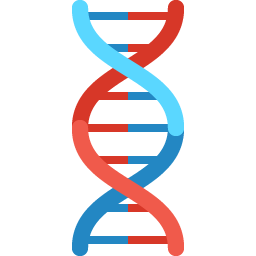
Stepping into Pinterest’s world might seem a bit daunting at first, but don’t worry! We’re here to guide you through it. Let’s break it down into manageable steps so you can start showcasing your art in no time.
Setting Up a Pinterest Business Account
First things first, you need to create a Pinterest business account. This isn’t just a regular Pinterest account; it’s a business account, which means you get access to extra features like analytics and advertising.
1. Go to Pinterest’s homepage and click on “Sign up.”
2. Choose “Create a business account.”
3. Fill in the necessary details like your email, password, and business name.
4. Choose “Art” as your business type.
5. And you’re done!
Creating Engaging Pins
Now that your account is set up, it’s time to start pinning! Remember, a pin is an image or a video that you add to Pinterest. Here’s how you can create pins that not only look good but also attract the right people:
| Tips for Creating Effective Pins |
|---|
| High-Quality Images: Make sure your images are clear, well-lit, and high-resolution. You want your art to look its best! |
| Vertical Orientation: Pins are usually vertical, with an ideal aspect ratio of 2:3. This format takes up more space on the screen, making your pins more noticeable. |
| Descriptive Text: Add text to your images to give more context. For example, if you’re pinning a watercolor painting, you might add “Watercolor Landscape” on the image. |
| Captivating Descriptions: When you upload a pin, you can add a description. Make it interesting and informative. Describe your art, your inspiration, or the story behind the piece. And don’t forget to use keywords that your potential buyers might use to find art like yours. |
Using Keywords and SEO
Speaking of keywords, let’s delve a bit deeper into this. Just like Google, Pinterest has its own algorithm that decides what content to show based on what someone is searching for. By using the right keywords, you can make your pins more discoverable.
| Pinterest SEO Tips |
|---|
| Pin Descriptions: Include keywords in your pin descriptions. For example, if you’re pinning a portrait painting, your description could be “Oil portrait painting of a woman in a red dress.” |
| Board Titles and Descriptions: You can also add keywords to your board titles and descriptions. If you have a board for your landscape paintings, you might title it “Landscape Oil Paintings” and describe it as “A collection of my oil paintings featuring beautiful landscapes from around the world.” |
| Profile Description: Don’t forget about your profile description! This is a great place to tell people who you are, what kind of art you create, and where they can buy it. And yes, use those keywords! |
Best Practices for Pinning

Now that you’re all set with creating pins and using keywords, let’s dive into some best practices to make your pinning more effective:
1. Consistency is Key: Pin regularly. This doesn’t mean you have to pin 100 things a day. Start with 5 pins a day and gradually increase as you get more comfortable. Regular pinning signals to Pinterest that you’re active, which can help your content get seen.
2. Variety Matters: Don’t just pin your own content. Mix it up by pinning other related content that your audience might find interesting. This could be art tutorials, art history facts, or even pins from other artists that inspire you.
3. Time it Right: The best time to pin can depend on your audience. Experiment with pinning at different times of the day to see when you get the most engagement.
4. Use Rich Pins: Rich Pins provide more context about your pin because they show extra information directly on the pin. There are four types of Rich Pins: app, product, recipe, and article. As an artist, product pins could be especially useful because they can include real-time pricing and a direct link to your product page.
Where Should Your Pins Link To?
Great, you’ve created a beautiful pin. But where should it lead when someone clicks on it? Here are a few options:
| Platform/Method | Description |
|---|---|
| Your Website or Online Store | This is the most straightforward option. If you have a painting for sale, link directly to that painting’s product page on your website. |
| Blog Posts | If you have a blog, Pinterest can be a great way to drive traffic to it. You might write blog posts about your creative process, art tutorials, or features about your latest pieces. |
| Newsletter Sign-Up Page | Growing your email list is always a good idea. Why not use Pinterest to do it? Create a pin that encourages people to sign up for your newsletter to get updates about your latest work. |
| Social Media Profiles | You can also use Pinterest to grow your following on other social media platforms. Link your pins to your Instagram, Facebook, or Twitter profiles |
The Power of Repins
Repins are a powerful tool in the Pinterest world. When someone repins your pin, they’re essentially sharing your artwork with their followers. This can significantly increase your reach and visibility. Here are a few tips to encourage repins:
Create High-Quality Pins: The better your pin looks, the more likely it is to get repinned. Remember, Pinterest is a visual platform, so make sure your pins are eye-catching and high-quality.
Encourage Repins: Don’t be shy about asking for repins. You can do this in your pin description or even on the pin image itself.
Engage with Your Audience: Pinterest is a community. Engage with your followers, respond to comments, and repin their content. The more active and engaged you are, the more likely your followers will repin your pins.
Repeat Posting of Pins
Pinterest is different from other social media platforms in that repeat posting is not only allowed but encouraged. Here’s why:
Sure, here’s the information converted into a single column table:
| Key Strategies |
|---|
| Increase Visibility: The more often you pin, the more likely your content will be seen. This is especially true if you have a large number of pins. By repeating pins, you increase the chances of your content being seen by different people at different times. |
| Reach Different Time Zones: Your followers might be spread across different time zones. By pinning the same content at different times, you can reach more of your audience. |
| Test Different Descriptions and Images: Repeating pins allows you to test different descriptions and images to see what performs best. |
The Viral Potential of Pins
One of the most exciting aspects of Pinterest is the potential for a pin to go viral. But what does that mean, and why is it important?
When a pin goes viral, it means it’s being widely shared and seen by a large number of people. This can happen when a pin gets a lot of repins, clicks, or saves, signaling to Pinterest’s algorithm that this is popular content. The algorithm then shows the pin to even more people, creating a snowball effect.
But why is this important?
1. Increased Visibility: A viral pin can significantly boost your visibility on Pinterest. It can help you reach a larger audience, including people who might not have discovered your work otherwise.
2. More Traffic to Your Site: If your pin links back to your website or online store, a viral pin can drive a lot of traffic. This can lead to more people viewing your art, signing up for your newsletter, or even making a purchase.
3. Brand Awareness: A viral pin can increase awareness of your art and your brand. Even if people don’t click through to your site, seeing your pin can make them more familiar with your work.
4. Potential for More Viral Pins: Once a pin goes viral, it can create a domino effect. People who discovered you through your viral pin might check out your other pins and repin them, increasing the chances of more of your pins going viral.
While it’s exciting to have a pin go viral, remember that it’s not the only measure of success on Pinterest. Consistency, quality content, and engagement with your audience are also crucial. And who knows? With the right strategies, your next pin might just catch the Pinterest wave and go viral!
Pinterest Group Boards
Pinterest Group boards are boards that multiple users can pin to. They are essentially a collaborative space where users with similar interests can share related content. For an artist, joining or creating a group board can have several benefits:
| Benefits of Pinning to a Group Board |
|---|
| Increased Visibility: When you pin to a group board, your content is seen by all the members of that board. This can significantly increase the visibility of your artwork, especially if the group board has a large number of followers. |
| Networking: Group boards allow you to connect with other artists and art enthusiasts. This can lead to valuable relationships, collaborations, and even opportunities for exhibitions or sales. |
| Learning and Inspiration: By seeing what other artists are pinning, you can gain inspiration and learn new techniques or trends in your art field. |
| Promotion: If the group board rules allow it, you can pin your own artwork or products from your online store. This can lead to increased traffic to your website and potentially more sales. |
To use group boards effectively, it’s important to find or create boards that are closely related to your art style or genre. Be sure to follow the board rules, pin relevant content, and engage with other members by commenting on or repinning their pins. By being an active and respectful member of the group board, you can boost your presence on Pinterest and make the most of this collaborative feature.
The key to Pinterest success is consistency. Keep pinning, keep engaging, and keep experimenting with different strategies. Over time, you’ll start to see what works best for you and your art. Happy pinning!
How Artists Can Sell Art on Pinterest
Now that you’ve set up your Pinterest business account and started creating eye-catching pins, you’re ready to move on to the next exciting stage – transforming those pins into sales! Here’s how you can use Pinterest to sell your art.

Firstly, it’s important to remember that every pin you create serves as a potential pathway to your online shop. When uploading a pin, you have the opportunity to add a website link. This is where you get to shine!
When you’re adding a link to your pin, make sure to direct your audience to the right place. If the pin showcases a specific piece of art, the link should lead directly to that product’s page in your online store. This ensures that potential buyers find exactly what they’re looking for without any unnecessary searching or clicking.
Furthermore, try to make the buying process as simple and straightforward as possible. The less hassle it is for someone to purchase your art, the more likely they are to follow through with the transaction.
Something as simple as a broken link can mean a missed sale, so always double-check your links to ensure they’re working correctly.
Pinterest offers a feature known as “Rich Pins”. These pins provide extra information directly on the pin itself. If you’re selling your art, you can take advantage of Product Rich Pins. These pins include real-time pricing, availability, and where to buy your product, which, in this case, is your art.
Promoting Your Pins
If you’re looking to increase your reach even further, consider promoting your pins. Promoted Pins are regular pins that you pay to appear in more places, helping your art reach a larger audience.
When choosing a pin to promote, select one that showcases your art in the best possible light. Remember, this pin could be the first impression someone has of your work, so it’s important to make it count!
When setting up a Promoted Pin, you can choose your target audience. Think about your ideal customer, their interests, and what they might be searching for on Pinterest and target your pin to reach people like them.
Finally, decide on a budget for promoting your pin. Even a small budget can make a significant difference in the visibility of your art.
Challenges of Using Pinterest for Art Promotion and Sales
Even though Pinterest is a wonderful platform for artists, it’s not without its challenges. But don’t worry! Every challenge is just a new opportunity to learn and grow. Let’s take a look at some of the hurdles you might face and how to overcome them.
| Getting Lost in the Crowd |
|---|
| PROBLEM: Pinterest is a big place, with millions of pins and users. It can feel like you’re just a tiny fish in a vast ocean. But remember, every big fish started out as a little one. |
| SOLUTION: Be patient and consistent. Keep creating high-quality pins, using the right keywords, and engaging with other users. Over time, your audience will grow. |
| Managing Your Time |
|---|
| PROBLEM: Pinterest, like any social media platform, can be time-consuming. You might feel like you’re spending all your time pinning and not enough time creating art. |
| SOLUTION: Set aside specific times for Pinterest. Maybe it’s an hour in the morning or half an hour in the evening. Use a scheduling tool to automate your pins, so you can set it and forget it. |
| Understanding Pinterest’s Algorithm |
|---|
| PROBLEM: Pinterest uses a complex algorithm to decide what pins to show to whom. It can feel like you’re trying to solve a puzzle without all the pieces. |
| SOLUTION: Stay informed. Pinterest often shares updates about its algorithm, so keep an eye on their news. Experiment with different strategies and see what works best for you. |
| Dealing with Slow Progress |
|---|
| PROBLEM: Sometimes, it might feel like you’re putting a lot of effort into Pinterest and not seeing much in return. Remember, success doesn’t happen overnight. |
| SOLUTION: Don’t get discouraged. Keep track of your progress, no matter how small. Celebrate every new follower, every new comment, and every new sale. You’re on the right track! |
Remember, every artist on Pinterest has faced these challenges. You’re not alone. And with every challenge you overcome, you’re one step closer to success. Keep going, keep learning, and keep creating. You’ve got this!
Is Pinterest Worthwhile for Artists?

So, we’ve journeyed through the world of Pinterest together, exploring its features, benefits, and challenges. Now, it’s time to answer the big question: Is Pinterest worthwhile for artists?
The short answer is yes! Pinterest is a powerful tool for artists. It’s a platform where you can showcase your work, connect with a global audience, and even sell your art. It’s a place where you can find inspiration, learn from other artists, and build a community of art lovers.
But remember, like any tool, it’s not about the tool itself, but how you use it. Pinterest can open doors, but it’s up to you to walk through them. It’s about being creative, not just with your art, but with your marketing strategy. It’s about experimenting, learning, and growing.
So, go ahead! Dive into Pinterest. Create beautiful pins, engage with your audience, and watch your art spread across the platform. Use Pinterest not just to sell your art, but to share it with the world. After all, art is not just about making a living, it’s about making a life.
And remember, you’re not just an artist. You’re a creative entrepreneur, a dreamer, and a doer. And with Pinterest, you have a tool that can help you turn your dreams into reality. So, get out there and start pinning!
